Earth on Fire | Bernhard Edmaier
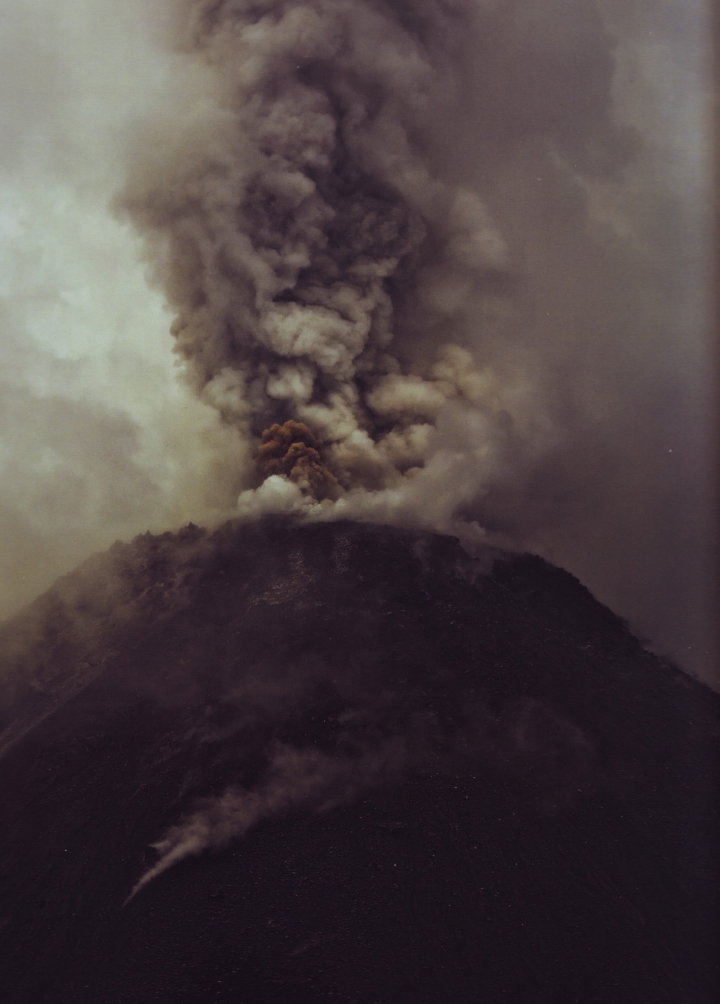
Santiaguito, Guatemala.
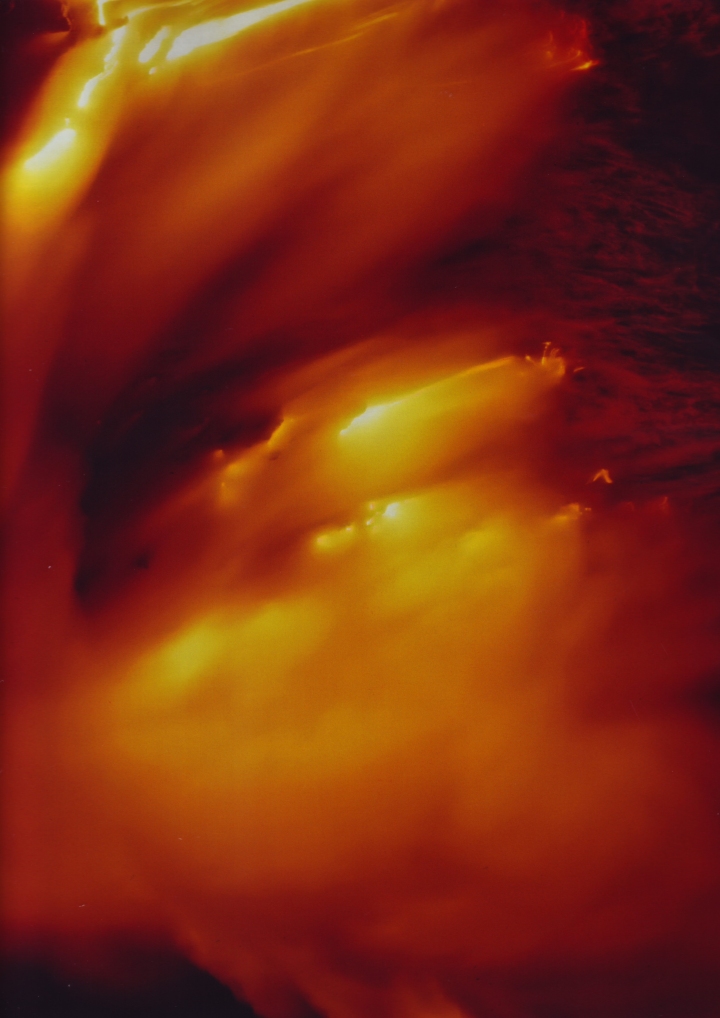
Kilauea (Big Island), Hawaii.
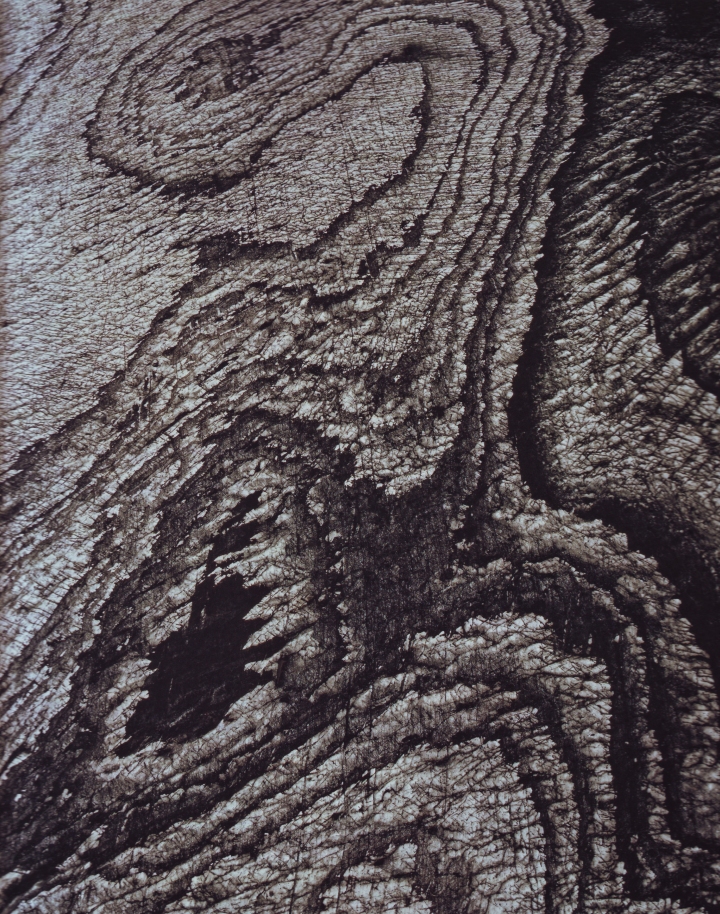
Skeiðarárjökull, Iceland.
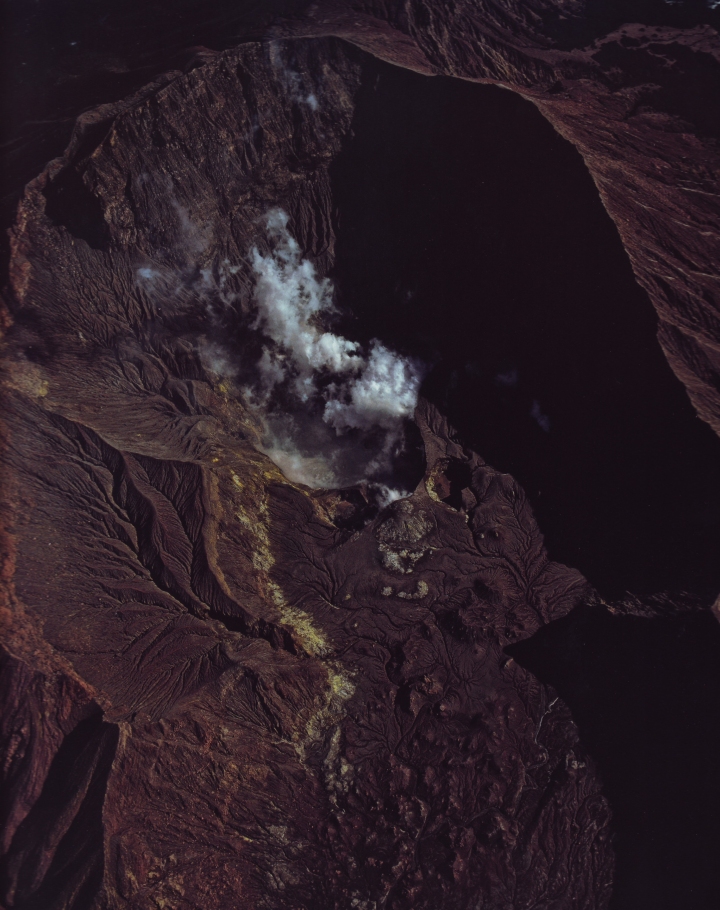
White Island, New Zealand.
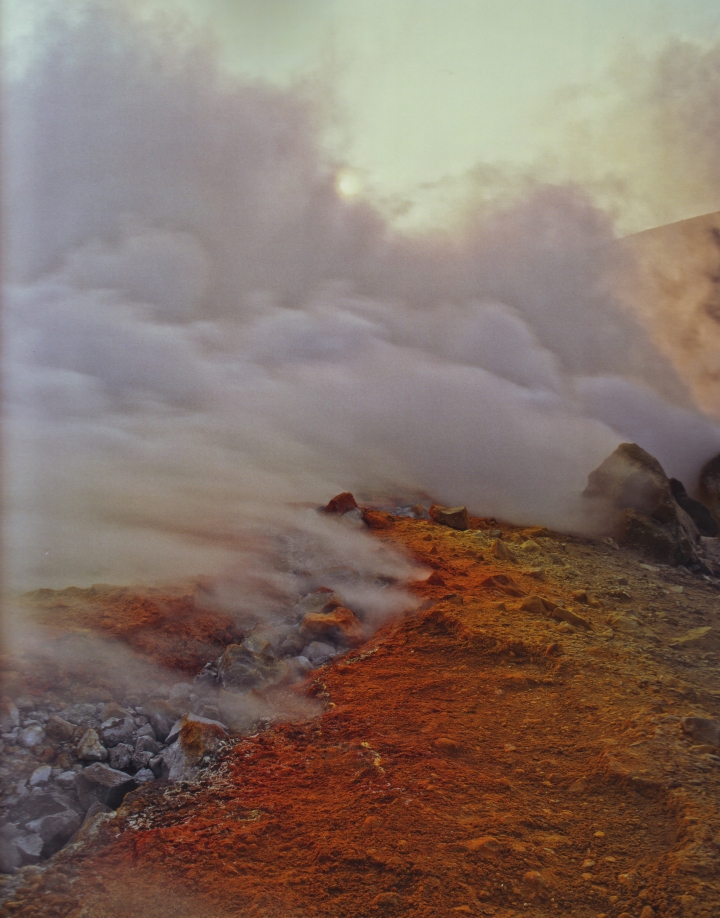
Fossa Crater (Aeolian Islands), Italy.
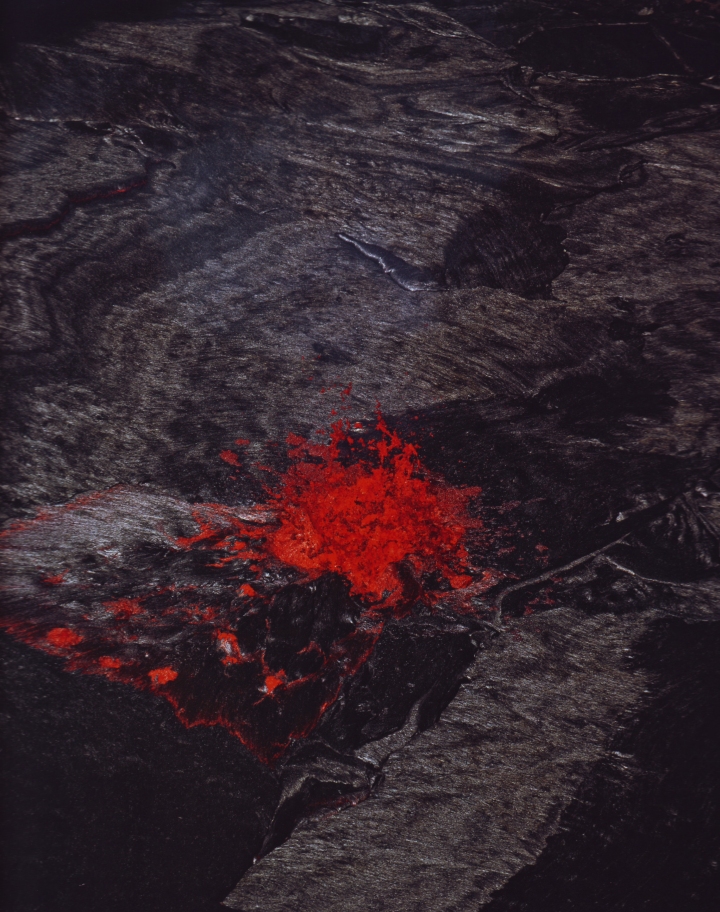
Erta Ale, Ethiopia.

Landeyjarsandur Estuary, Iceland.
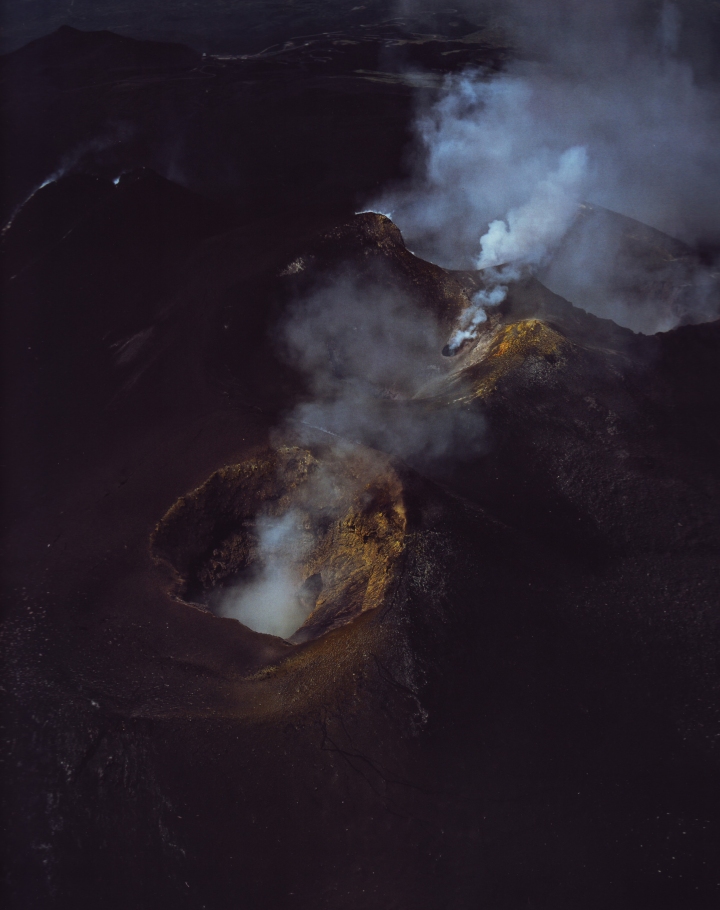
Mount Etna, Italy.
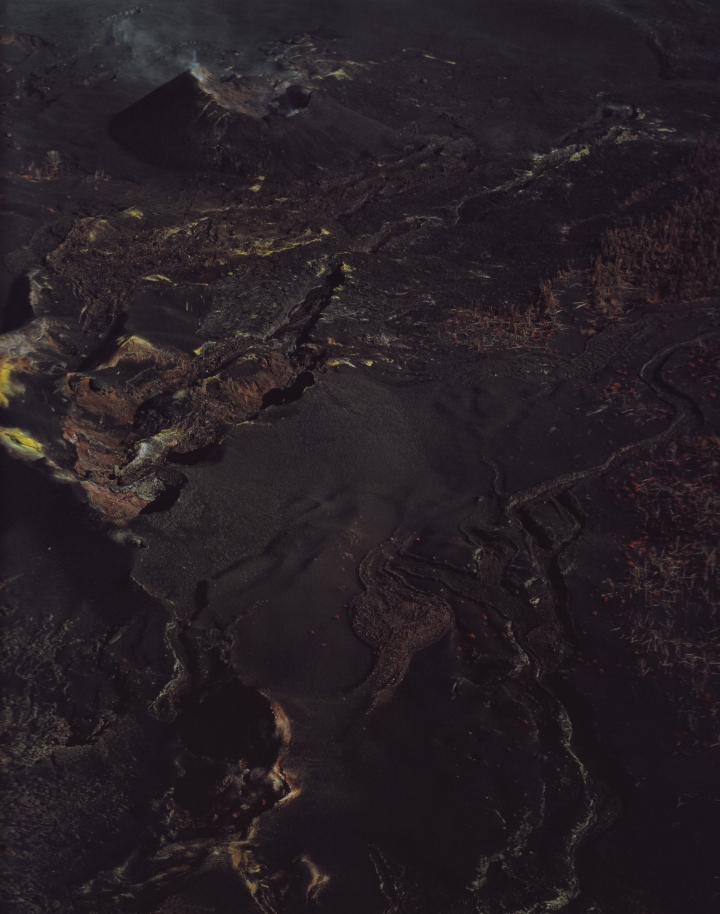
Nyamulagira, Democratic Republic of Congo.
___
Earth on Fire
Bernhard Edmaier
Phaidon Press Inc.
2009
___
A
Windfall Light | The Visual Language of ECM
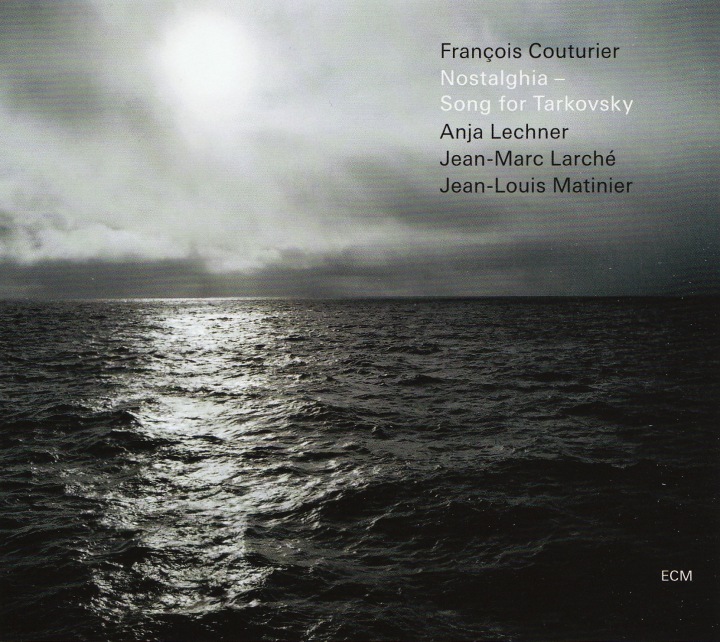
ECM 1979. Photograph by Christopher Egger
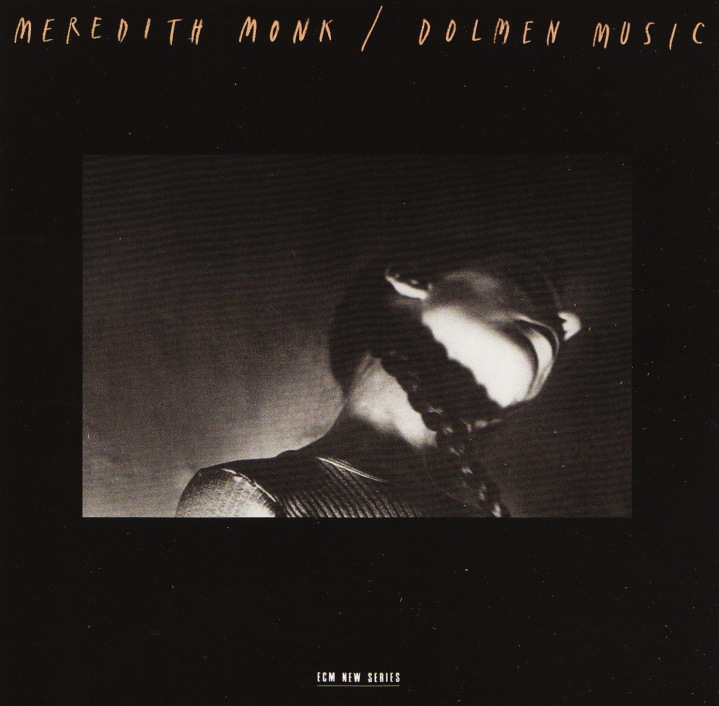
ECM New Series 1197. Photograph by Sarah Van Ouwekerk
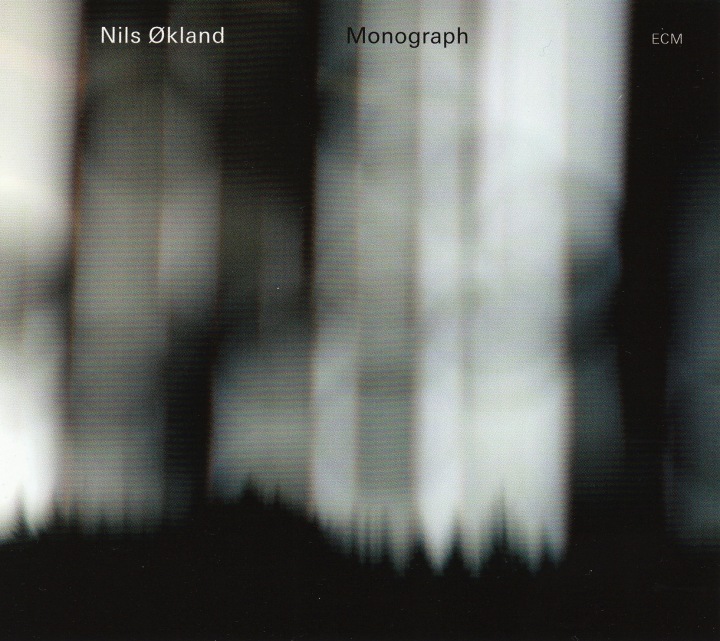
ECM 2069. Photograph by Jan Kricke
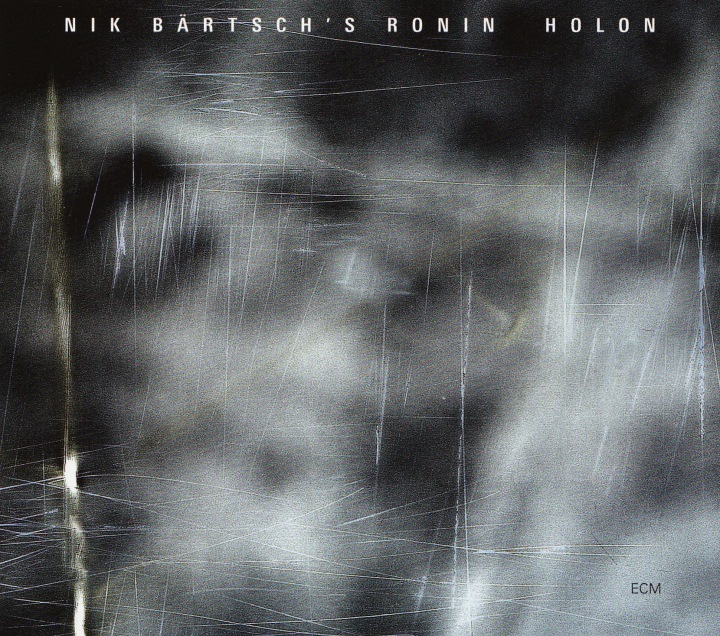
ECM 2049. Photograph by Thomas Wunsch
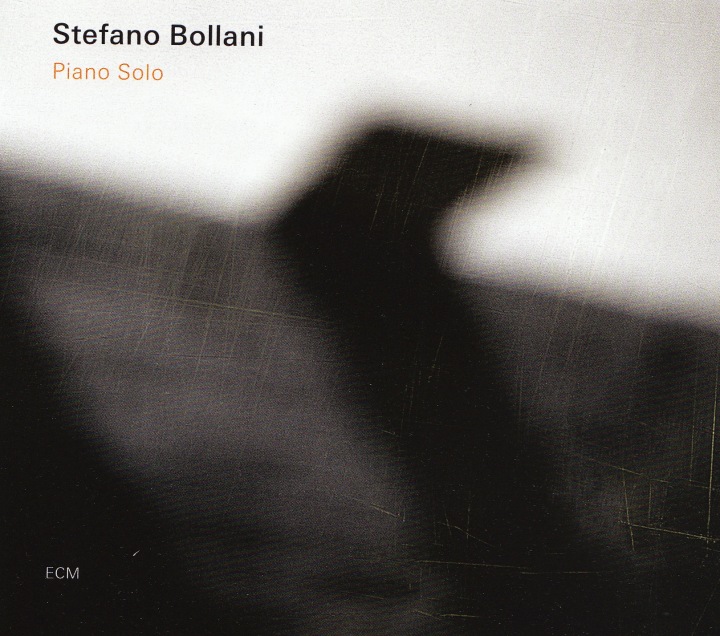
ECM 1964. Photograph by Thomas Wunsch
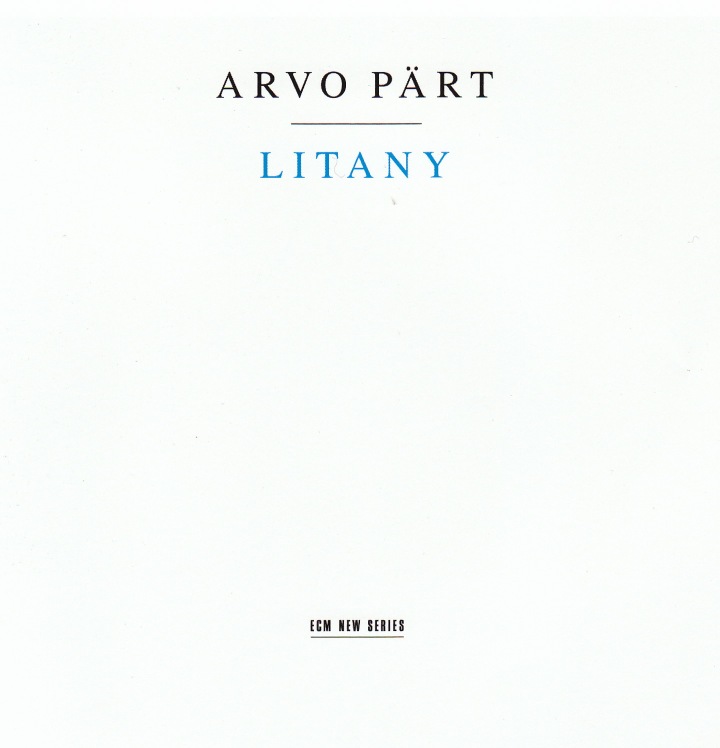
ECM New Series 1592. Art Direction by Barbara Wojirsch
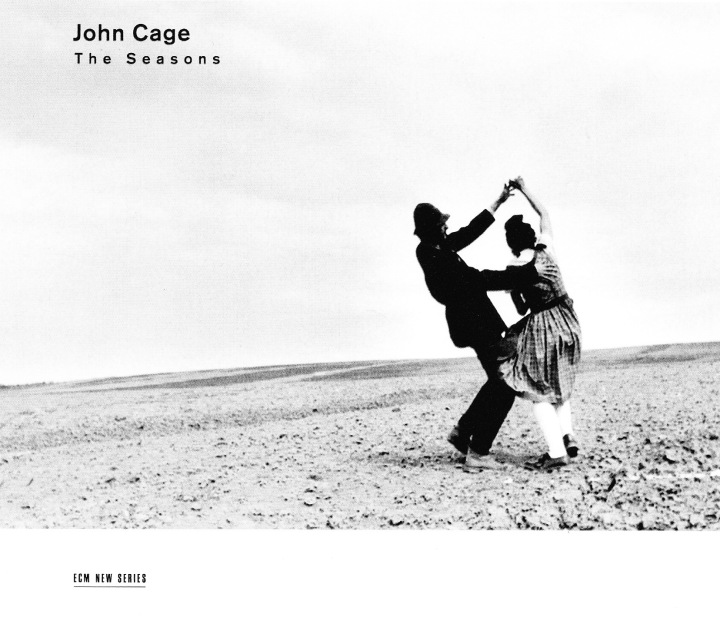
ECM New Series 1696. Photograph by Jo Pessendorfer
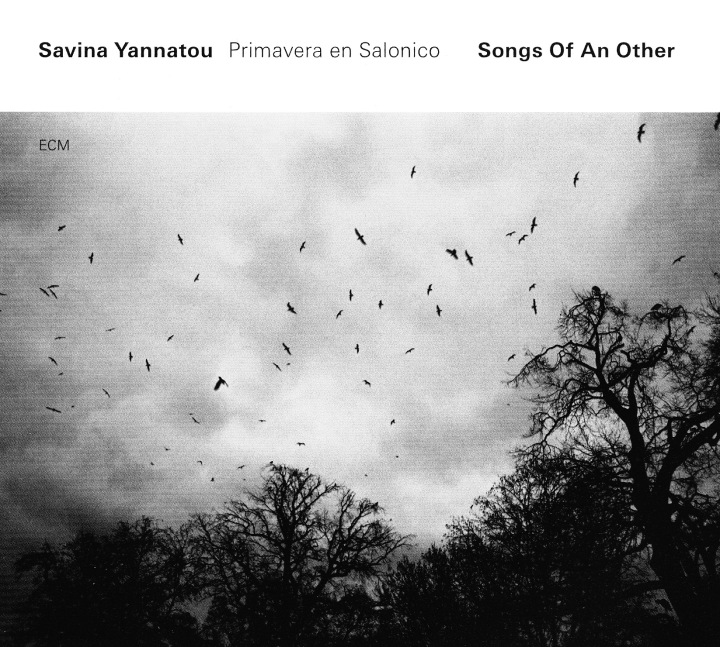
ECM 2057. Photograph by Thanos Hondros
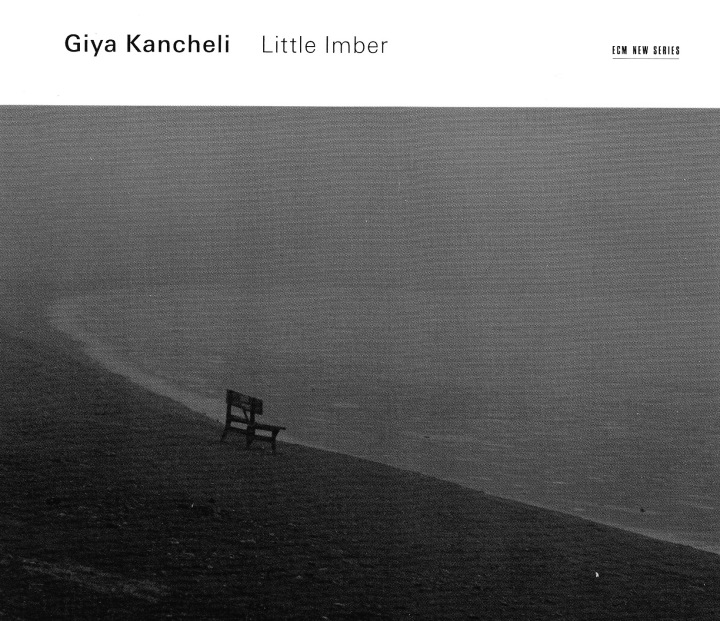
ECM New Series 1812. Photograph by David Kvachadze
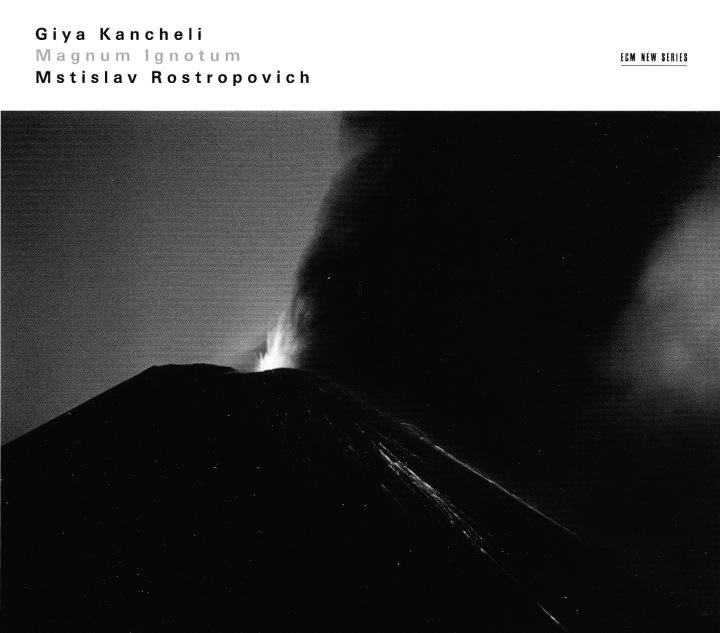
ECM New Series 1669. Photograph by Flor Garduno
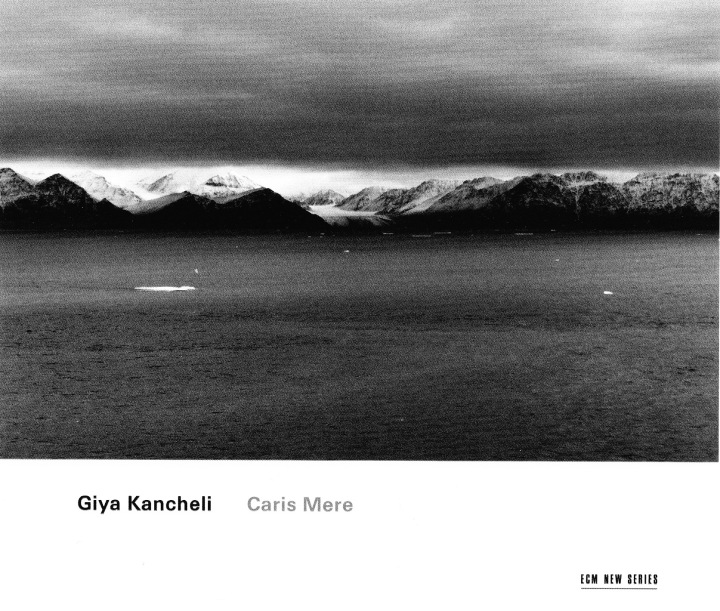
ECM New Series 1568. Photograph by Christopher Egger
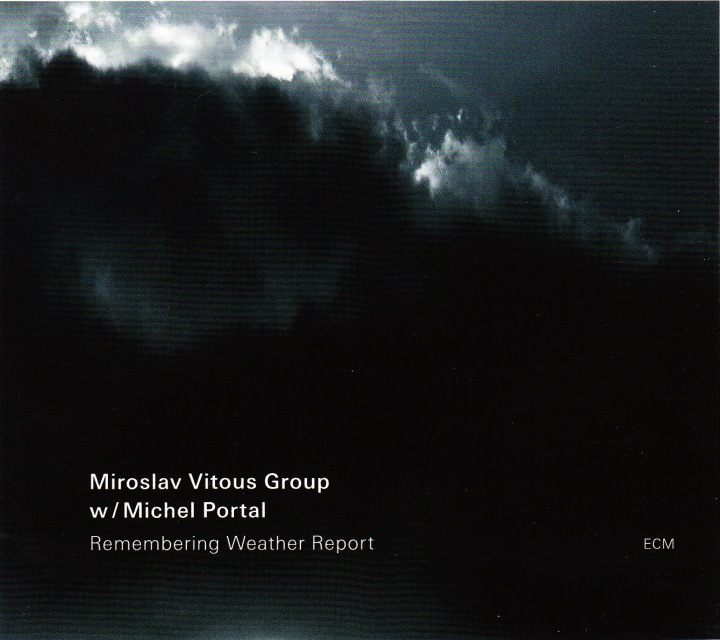
ECM 2073. Photograph by Sascha Kleis
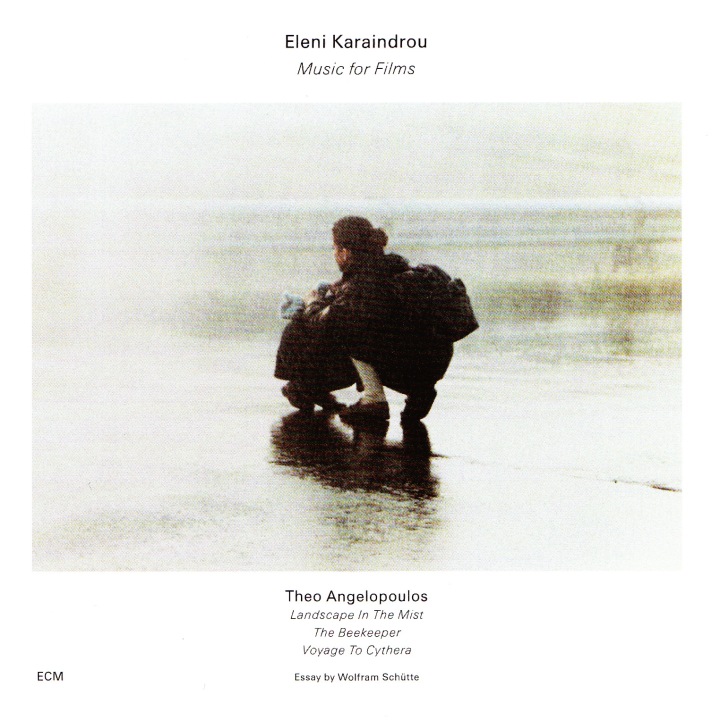
ECM 1429. From: “Landscape in the Mist” by Theo Angelopoulos. Photograph by Giorgos Arvanitis
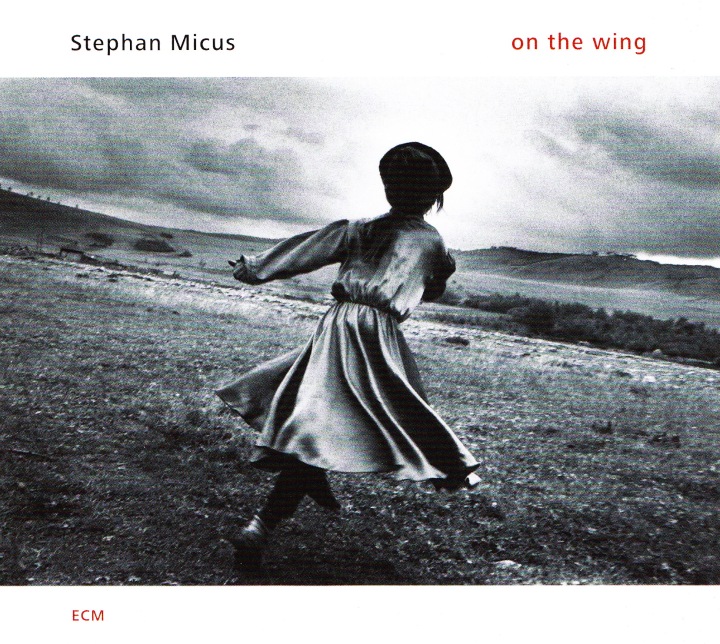
ECM 1987. Photograph by Claudine Doury
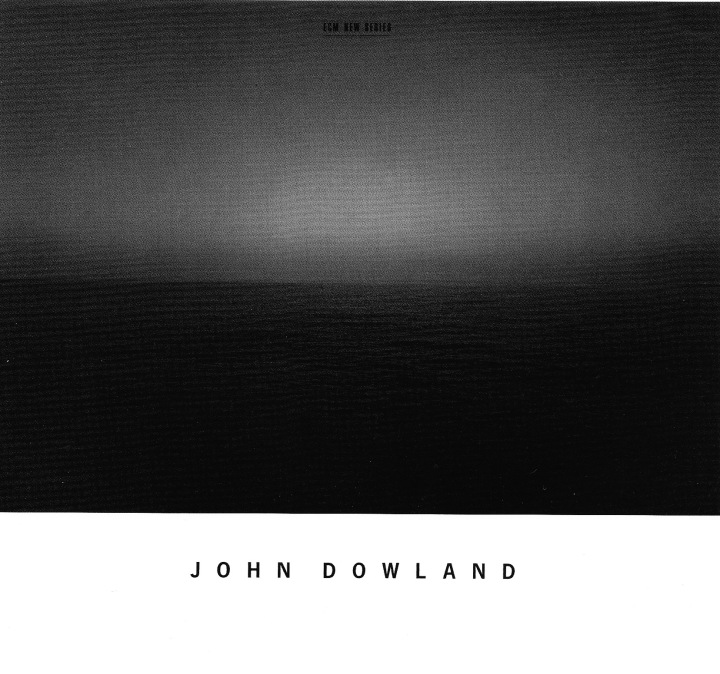
ECM New Series 1697. Photograph by Jim Bengston
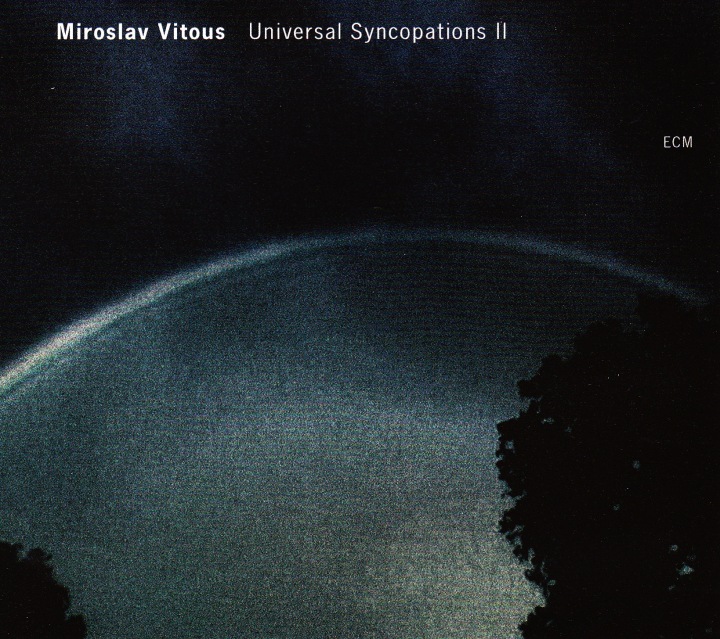
ECM 2013. Photograph by Sascha Kleis
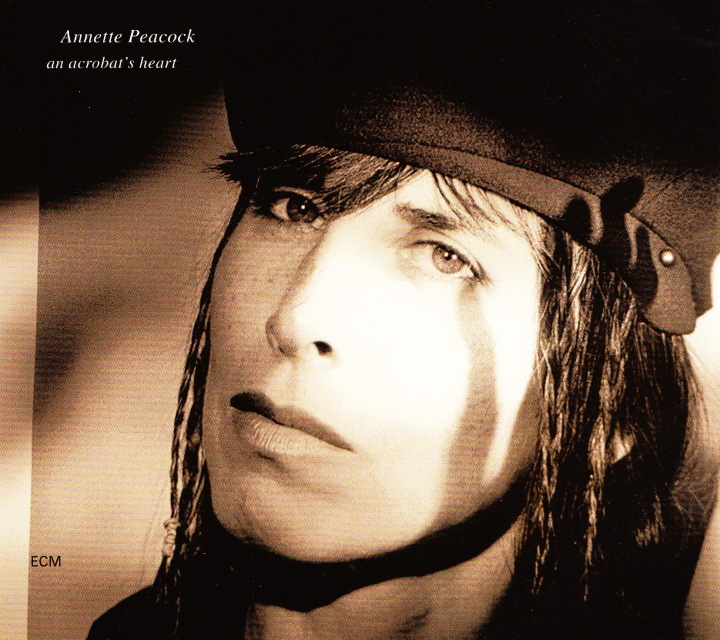
ECM 1733. Photograph by Alastair Thain

ECM 2080. Photograph by Eberhard Ross
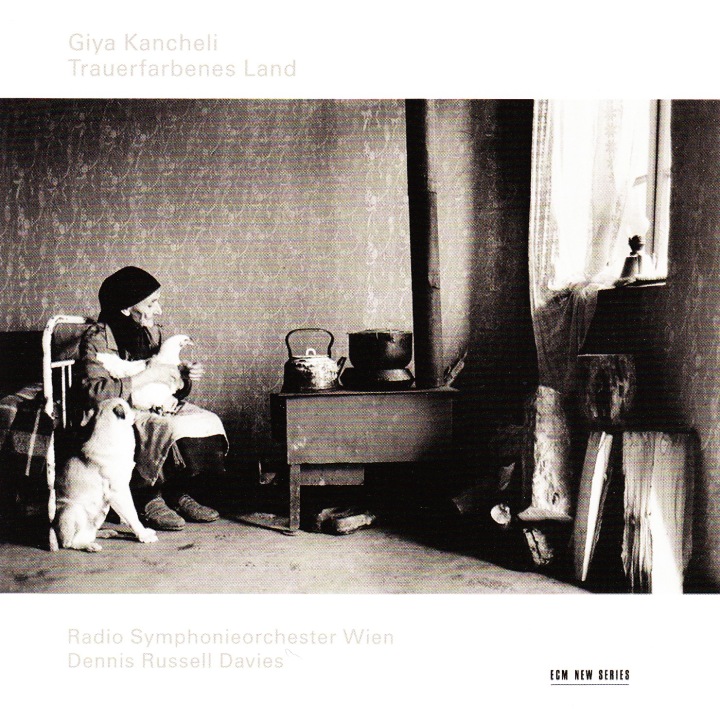
ECM New Series 1646. Photograph by Giya Chkatavashvili
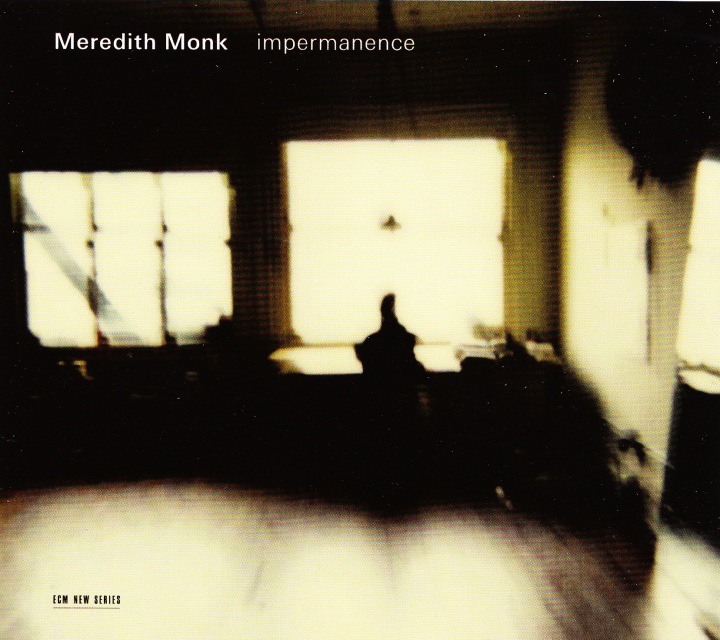
ECM New Series 2026. Photograph by John Sanchez

ECM 1664. From: “Passion” by Jean-Luc Godard
If the sea had no waves to uproot it
and give it back to the sea, if the sea had
too many waves (but not enough) to
overrun the horizon, enough (but just barely)
to disturb the earth, if the sea had no
ears to hear the sea, no eyes to be forever
the look of the sea, and if the sea had neither
salt nor foam, it would be a grey sea
of death in the sun cut off from its roots.
It would be a dying sea amid branches
cut off from the sun. It would be a mined
sea whose explosions would threaten the
world in its elephant memory. But the fruit.
What would become of the fruit? But man.
What would become of man?
-Edmond Jabès, from: The Book of Questions
___
Windfall Light : The Visual Language of ECM
Lars Müller : Thomas Steinfeld : Katharina Epprecht : Geoff Andrew : Ketil Bjørnstad
Edition of Contemporary Music : Lars Müller Publishers
2010
___
B
Building Images | Lucien Hervé
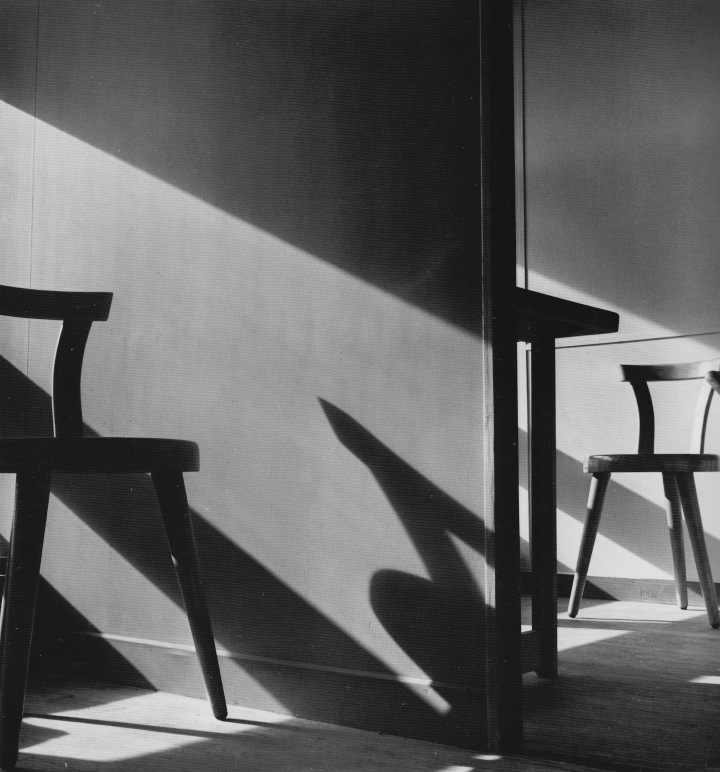
Charlotte Perriand Chair, Unité d’Habitation, Marseille, Le Corbusier, architect; 6 x 6 negative.

Wall in Belleville, Paris, 1947; vintage print.

Knossos, Crete, 1956; vintage print.
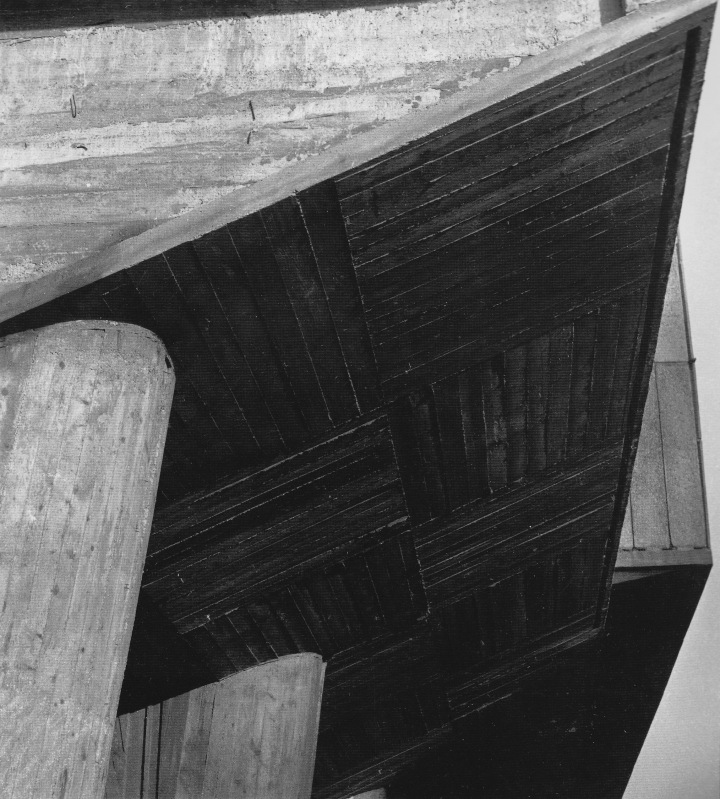
Unité d’Habitation, Marseille, Le Corbusier, architect, 1949; 6 x 6 negative.
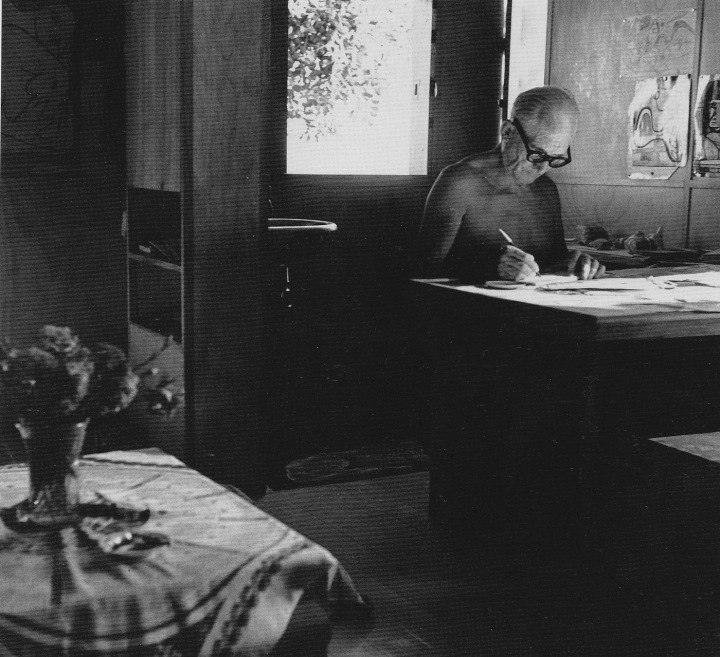
Le Corbusier in His Cabin, Cap-Martin, 1951.
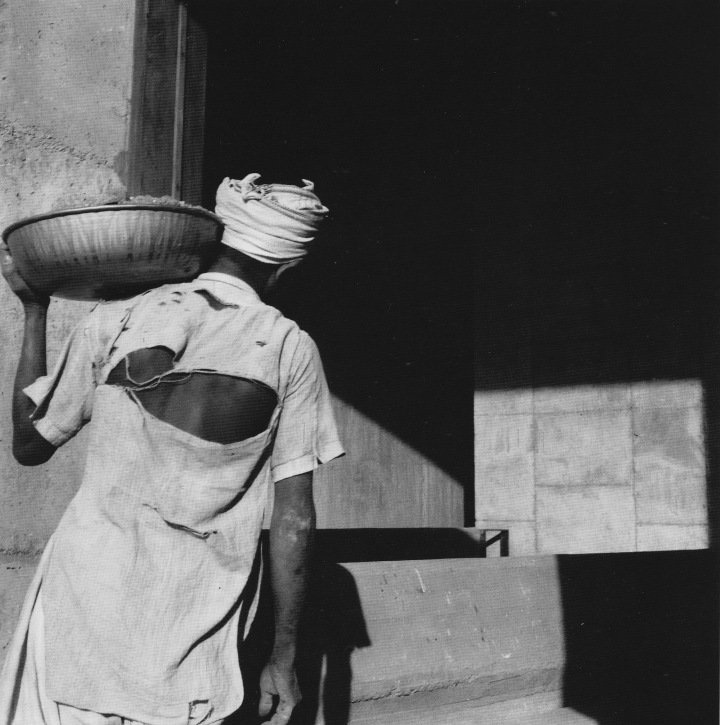
Chandigarh, the High Court, India, Le Corbusier, architect, 1955; cropped 6 x 9 negative.
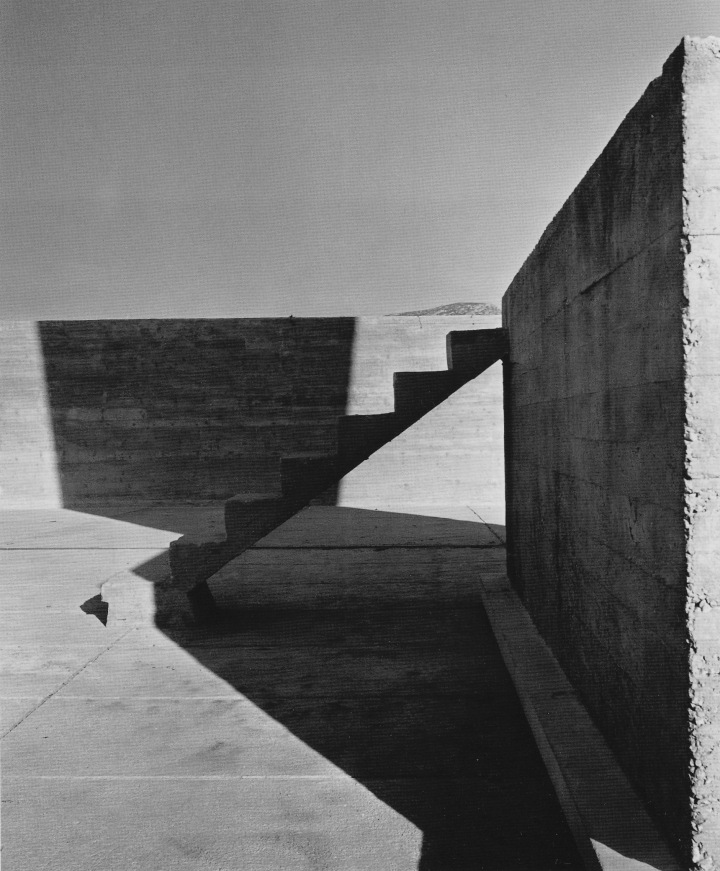
Unité d’Habitation, Le Corbusier, architect, 1952; cropped 6 x 6 negative.
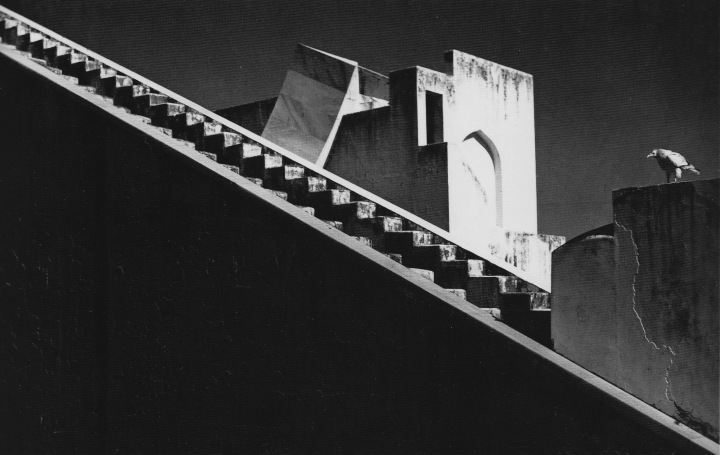
Jaipur, Observatory, India, 1955; cropped 6 x 6 negative.

Ronchamp Chapel, Le Corbusier, architect, 1953; cropped 6 x 9 negative.
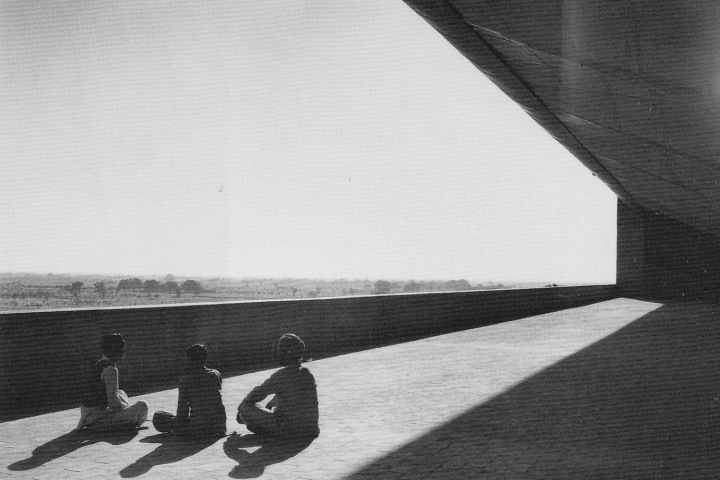
Chandigarh, The High Court, India, Le Corbusier, architect, 1955.
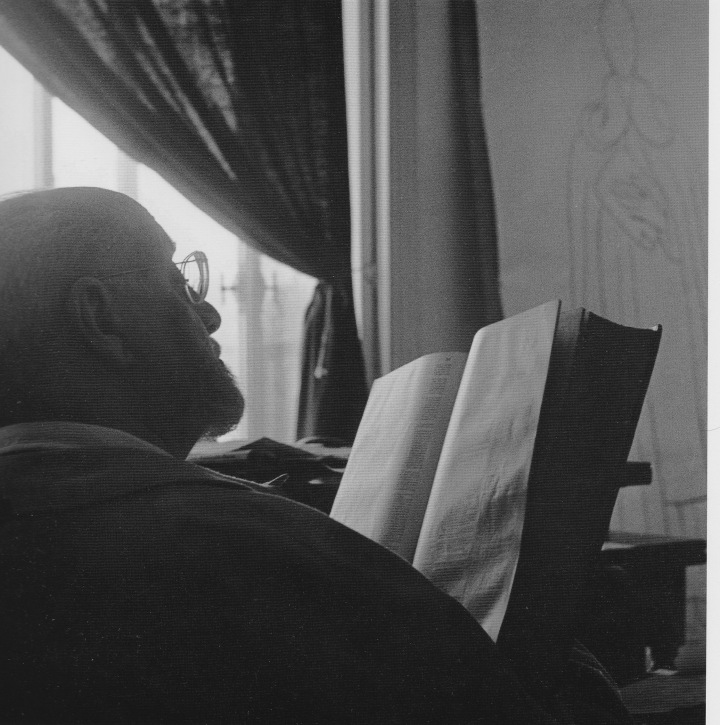
Henri Matisse, Painter and Sculptor, Hôtel Régina, Nice, 1949; 6 x 6 negative.
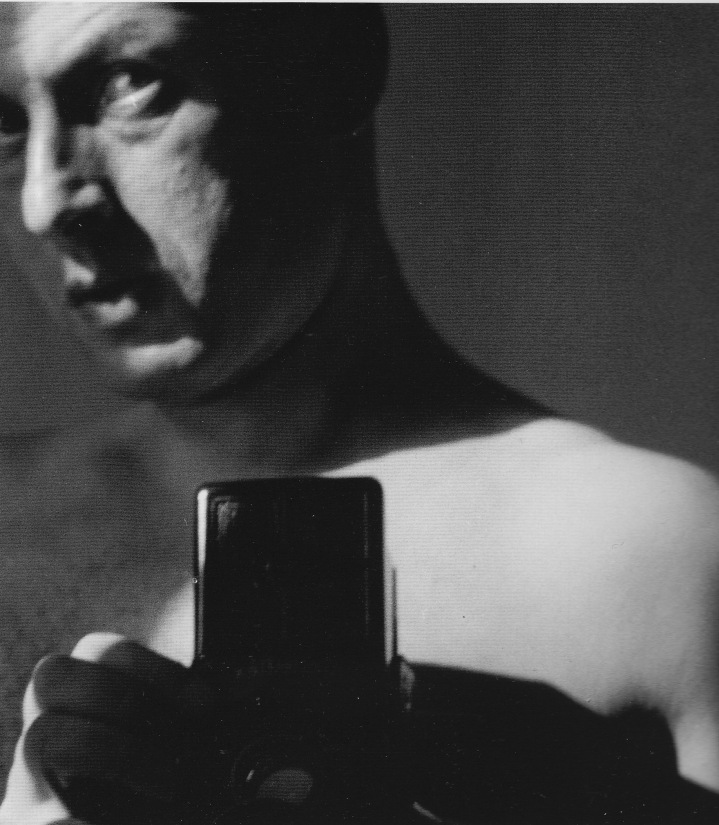
Lucien Hervé, Self Portrait, 1938.
Lucien Hervé was one of the great architectural photographers of the twentieth century and widely recognized for his collaborations with Le Corbusier from 1949 until the renowned architects death in 1965. Hervé approached his subjects, specifically the buildings he was commissioned to document, with a particular focus on conveying a sense of space, texture and structure. Through a strong contrast of light and shadow, Hervé defined the dialogue between substance and form as well as placing emphasis on building details. In this way, the photographer was able to communicate the depth of a room, the surface of a wall, or the strength of a buildings framework. However, Hervé the master of architectural photography has eclipsed Hervé the photographer, whose career began as early as 1938 and whose subject matter varied widely.
___
Building Images : Lucien Hervé
Oliver Beer
Getty Publications
2004
___
B
8 Untitled Works | Josie Miner


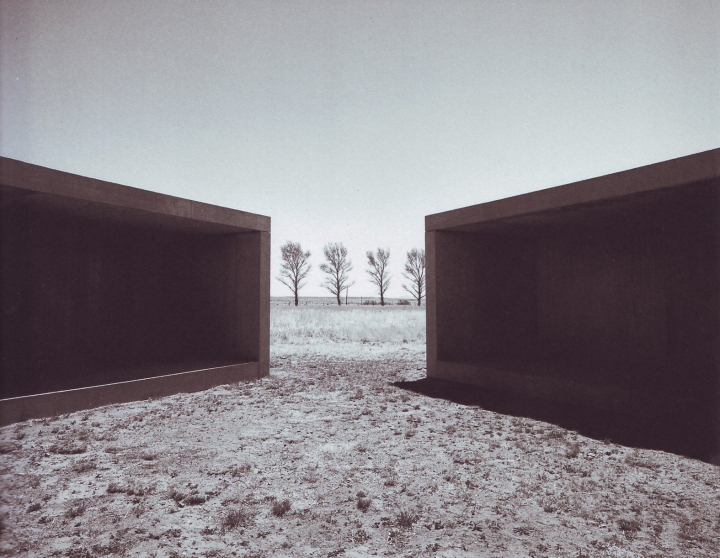
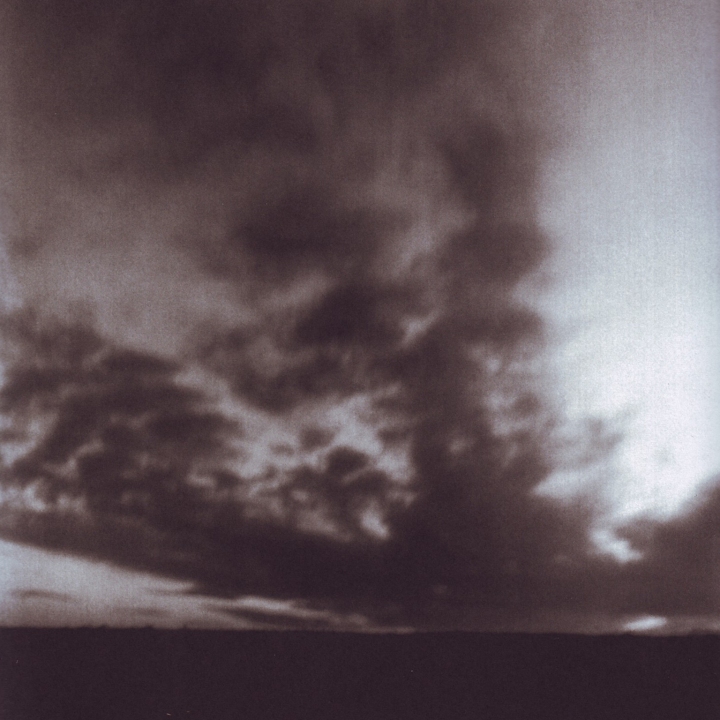

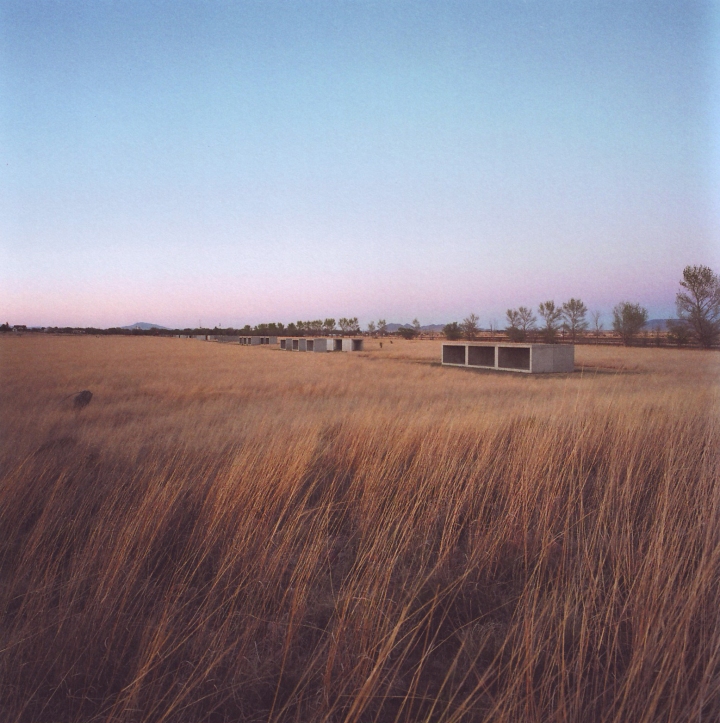

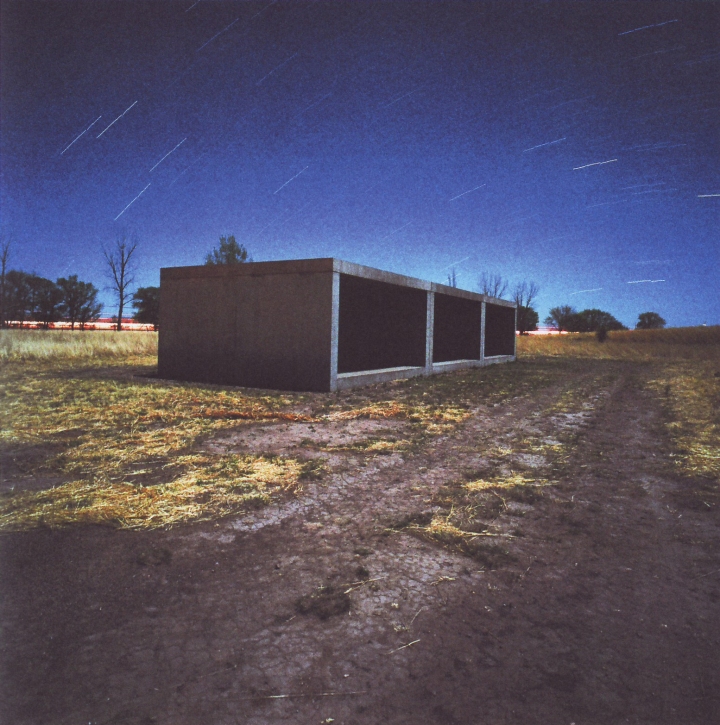
All fifteen concrete works by Donald Judd cast and assembled on-site in Marfa, Texas between 1980 through 1984. Each measures 2.5 x 2.5 x 5 meters.
Shade is short and miles away, tucked between the Chinati mountains and the Mexican border.
In the low, lonely horizontal blue desert plain of the Chihuahuan.
As day dims, light is long.
Bowing towards the horizon, the retiring sun sets the sky ablaze and the desert aglow.
A weightless, soft sensual glow : purple mountain silhouettes, capacious sky, undulating glass, amber cactus and concrete.
Light and dark, land and sky and blue and melt.
The cool, quiet haze of dark generously gives way to starry desert night dreams.
___
A Magazine #9
Proenza Shouler : Tom Watt : Ian Davies : Nathalie Ours
A Publisher
2009
___
A
Doug Aitken

Blow Debris, 2000. Colour film transferred to 9 channel digital video installation, colour, sound and architectural environment, 21 min. cycle.

Electric Earth, 1999. Colour film transferred to 8 channel laserdisc installation, colour, sound, 9 min. 50 sec. cycle.

Electric Earth, 1999. Colour film transferred to 8 channel laserdisc installation, colour, sound, 9 min. 50 sec. cycle.

Who’s Under The Influence, 1999. Diptych.

Glass Barrier, 2000. C-print mounted on Plexiglas.

Diamond Sea, 1997. Colour film transferred to digital video, 3 channels, 3 projections, 1 monitor, Duratrans backdrop, sound and architectural environment, 10 min. cycle.

Diamond Sea, 1997. Colour film transferred to digital video, 3 channels, 3 projections, 1 monitor, Duratrans backdrop, sound and architectural environment, 10 min. cycle.

2 Second Separation, 2000. C-print mounted on Plexiglas.

Eraser, 1998. Colour film transferred to 7 channel digital video installation, sound and architectural environment, 20 min. cycle.
Amanda Sharp: Director Werner Herzog once explained that his book On Walking in Ice (1979) came about when he found out that a friend of his was dying in Paris. Herzog decided that if he walked from wherever he was – I assume Munich – to Paris, his friend lived: he felt he could keep his friend alive by walking. A work like this is about how individuals can attempt to alter – slow down or speed up – time, how they’re somehow part of a much bigger system.
Doug Aitken: We all encode our experiences of time at different rates. A single moment from several months ago may consume our thoughts, yet a whole summer five years ago may have completely vanished from our memory. We stretch and condense time until it suits our needs. You could say that time does not move in a linear trajectory, and moreover we’re not all following time using the same system.
When I was twenty-one I worked in an editing room for the first time. We were working long hours, day and night, but for me it was a new sensation, fresh and exciting. When finally I could go home to sleep, my dreams were extremely vivid. As I was moving through a dream, I would look down in the lower right hand corner of my dream and see numbers: a time code, like the date-time-minute-frame numbers used in editing raw footage. I was surprised I had never noticed this time code in my dreams before! I also recognized that I no longer needed to watch and witness my dreams passively; I could stop my dream like a freeze frame and look around as if watching a giant, frozen photograph. I could pull back and the dream would rewind so that I could reassemble it in new ways. That night I re-edited my dreams over and over again.
I suppose my working process is very nomadic. I’m not interested in working out of a sterile, traditional, white-cube studio. I’d like to find a methodology that is constantly sight specific, constantly in flux. Some works which are very fictional demand to be built and constructed as if part of a new reality, while others require an intense investigation into a specific landscape. I would like the permanence of my process to be as temporary as possible. I’d like to think of an absence of materialism where at the end of the day, all one needs is a table, a chair, a sheet of paper,possibly less. That would be nice: to be without routine and unnecessary possessions.
Uprooting and removal surrounds us, and at times these can be mirrored in our working process. At times I just let go and am assimilated into my landscapes, other times I feel an active resistance. I think there’s something about growing up in America that makes you feel nothing is ever really stationary. Home can be motion at times*.
*Excerpt from Amanda Sharp in conversation with Doug Aitken.
___
Doug Aitken
Daniel Birnbaum : Amanda Sharp : Jörg Heiser
Phaidon
2005
___
B
Do You Know What I Mean | Juergen Teller










All images; Ed in Japan, 2005/2006; originally published as Ed in Japan (Paris: Purple publications, 2006).
…It was unusual and powerful. It was clear that he was putting people in some kind of danger. There was no concern for classical beauty, but it took people somewhere else…
When Juergen starts to shoot he shoots constantly. It’s like a form of intrusion. You almost feel trapped. That’s how he manages to capture those completely uncontrolled moments because he literally traps you in his camera…
That’s how he gets those intimate moments, those unconscious movements of the body and mind. He doesn’t give you the time to organize your own mise en scène. He doesn’t give you time to think about what you are going to do. He anticipates the slightest of your movements, the slightest of your inner thoughts, and that’s how he manages to capture this incredible truth in bodies, in faces. He tries to avoid any conscious expression…
Isabelle Huppert
___
Do You Know What I Mean
Juergen Teller : Marie Darrieussecq : Isabelle Huppert
Fondation Cartier pour l’art contemporain / Thames & Hudson
2006
___
R
Gordon Matta-Clark

Splitting, 1974. Black and white photo collage, 101.5 x 76.2 cm.

Splitting, 1974. Black and white photo collage, 100 x 72 cm.

Splitting, 1974. Black and white photo collage, 100 x 100 cm.

Splitting, 1974. Black and white photo collage, 50 x 60 cm.

Day’s End, 1975. Colour photograph, 96 x 103 cm.

Day’s End, 1975. Cibachrome, 121 x 103.5 cm.

Conical Intersect, 1975. From a series of five colour photographs, 101.6 x 106.7 cm.

Conical Intersect, 1975. From a series of five colour photographs, 101.6 x 106.7 cm.

Conical Intersect, 1975. From a series of five colour photographs, 101.6 x 106.7 cm.

Conical Intersect, 1975. From a series of five colour photographs, 101.6 x 106.7 cm.

Conical Intersect, 1975. From a series of five colour photographs, 101.6 x 106.7 cm.

Conical Intersect, 1975. Cibachrome, 101.1 x 76 cm.

Office Baroque, 1977. Cibachrome, 101.6 x 76.2 cm.

Office Baroque, 1977. Cibachrome, 108 x 58 cm

Office Baroque, 1977. Cibachrome, 101.5 x 75.6 cm.
“I don’t know what the word “space” means…I keep using it. But I’m not quite sure what it means.” – Gordon Matta-Clark.
From 1971 until his death in 1978, the American artist Gordon Matta-Clark produced a body of work popularly known the “building cuts”; sculptural transformations of abandoned buildings paradoxically constructed through the cutting and virtual dismantling of a given architectural site. Situated in places ranging from slums in Manhattan to the waterfront of Antwerp, these works, long since destroyed, appear to comply with the most canonical assumptions of site-specific art in the seventies. On the one hand they demonstrate the commonly accepted notion that the place where the artwork is encountered necessarily conditions its reception, foregrounding as they do the the localized dynamics between institutions, property values and works of art. On the other hand Matta-Clark’s cuttings address the temporality of the built environment, marking the destruction of the buildings that effectively constituted such places.
To read the personal testimonials on Matta-Clark’s work is to sense the experimental limitations of these models, for what marks these accounts is a certain failure of description that attends to the dizzying, at times overwhelming, experience of the building cuts; their unsettling shifts in scale, their Piranesiesque irruptions into architectural mass, their vertiginous drops and labyrinthine passages, their gaping holes, each affording the most disorientating vistas.
___
Gordon Matta-Clark
Thomas Crow : Corrine Diserens : Judith Russi Kirshner : Christian Kravagna
Phaidon
2003
___
Gordon Matta-Clark | Conical Intersect (1975)
B
I Like America and America Likes Me | Joseph Beuys











‘For me it is the idea of the word that produces all images. It is the key sign for all forms of moulding and organizing. When I speak using a theoretical language, I try to induce the impulses of this power, the power of the whole understanding of language which for me is the spiritual understanding of evolution.’
But language is not to be understood simply in terms of speech and words. That is our current drastically reduced understanding of language, a parallel to the reduced understanding of politics and economics. Beyond language as a verbalization lies a world of sound and impulses, a language of primary sound, without semantic content, but laden with completely different levels of information.
Every form of life speaks a language, untapped and unheard.
___
Joseph Beuys : Coyote
Caroline Tisdall
Schirmer/Mosel
1976
___
R
Complete Works | Vincent Van Duysen

Photo essay by Alberto Piovano (Photograph by Alberto Piovano)

Photo essay by Alberto Piovano (Photograph by Alberto Piovano)

M Residence, Mallorca, Spain, 1996-1997 (Photograph by Alberto Piovano)

VL Residence, Bruges, Belgium, 1999-2000 (Photograph by Alberto Piovano)

DC Residence, Waasmunster, Belguim, 1998-2001 (Photograph by Alberto Piovano)

Capco Offices, Antwerp, Belgium / New York, USA, 1999-2001 (Photograph by Alberto Piovano)

Copyright Bookshop, Antwerp, Belgium, 2000-2001 (Photograph by Alberto Piovano)

VVD Residence, Dendermonde, Belgium, 1998-2003 (Photograph by Alberto Piovano)

Desk and Chair for Bulo, 2004 (Photography by Alberto Piovano)

Neutra Outdoor Collection for Tribù, 2008 (Photography by Alberto Piovano)
On Vincent
Vincent’s work is human;
it possesses many qualities
that we value in people.
It is calm yet determined.
It is reliable yet surprising.
It is sensual, but discreetly so.
It is sober yet spirited.
In other words, it is like a good friend,
like Vincent himself.
Ann Demeulemeester and Patrick Robyn
_
‘Verwechseln Sie bitte nicht das Einfache mit dem Simplen’
(Don’t confuse minimal with simple)
Mies van der Rohe
___
Complete Works
Vincent Van Duysen : Ilse Crawford : Marc Dubois
Thames & Hudson
2010
___
R
Sachlich | Christian Boltanski






Objets confisqués par les Nazis et déposés au Musée Central des Juifs, Prague
(Items confiscated by the Nazis and deposited in the Central Jewish Museum, Prague)
1941-1945



Inventaire des objets ayant appartenu à une femme de Baden-Baden
(Inventory of items that belonged to a woman from Baden-Baden)
1973


Les habits de François C.
(The clothes of Francis C.)
1972




Objets trouvés dans les égouts de Zurich pendant la semaine du 1er au 10 Juin
(Items found in the sewers of Zurich during the week of 1 to June 10)
1994
Sachlich (Objective), part of a four part series that comprises Kiddish, surveys Boltanski’s principal motifs of place, memory and loss.
The banal tenor and specificity of context in Boltanski’s still-lifes introduce an interesting dialogue as the tonality and depth, or lack thereof, in his photographs render what are reasonably delicate subjects, into mute and objectified echos from a nonspecific time or place. Boltanski’s infatuation with confiscated war relics, (post-) belongings and objet trouvé presented throughout his tetrad make reference to the anonymity and translucence of memory, the interstitial space between sentimentality and indifference, and ultimately focus on transience, singularity and, often forced, despondency. These topos are poignantly represented in the thin vellum leaves of Sachlich that obscure and adumbrate the overleaf images, possessing the lucidity and vagrant non-specificity of memory itself.
Boltanski’s canon analyses notions of detachment and ephemerality in peculiar ways; monolithic aggregates of found and disregarded objects, candles and oxidized copper, or works of stone bare insight into an artist who’s works, ideologies and prehistory are often conflicting. Having absented himself from formal education in his preteens, Boltanski moved from rudimentary sculpture, drawing and painting to installations of pensive and introspective sculptural, filmic, and photographic works; questioning his own substance and significance in relation to memory, lineage and cultural praxis – the multidisciplinary nature and varied scale of these installations characterizes his work to date. An undercurrent throughout Boltanski’s work, and something that can often be difficult to grasp, is the over-simplification, and to a large degree the denial, of intellectual reason. When Boltanski’s work seems to display a profound melancholy or contemplation on histories past, it is the artist who abruptly categorizes his works as quotidian debris, coincidence or ‘stupid’ objects – stating that that it is ‘simply much easier to be dead, than to be alive.’*
___
Sachlich
Christian Boltanski : Toni Stooss : Catrin Wesemann
KUNSTHALLE Wien
1995
___
R
5 comments